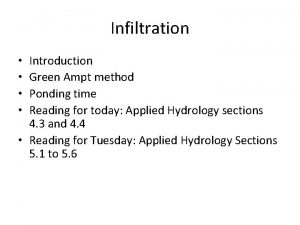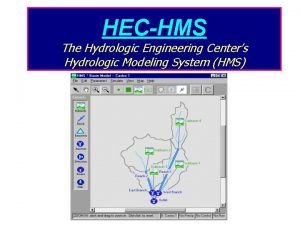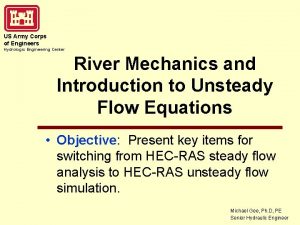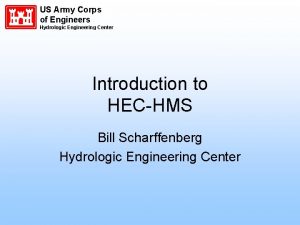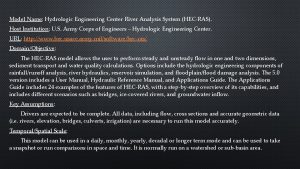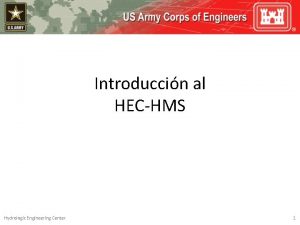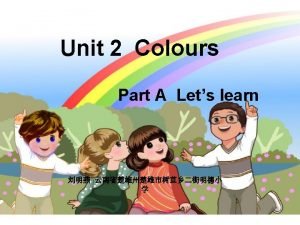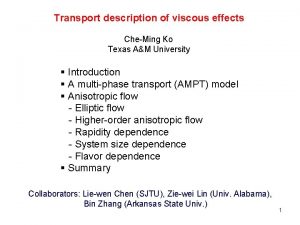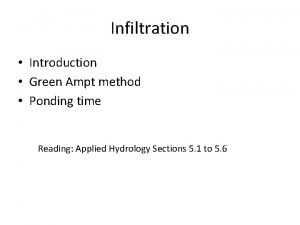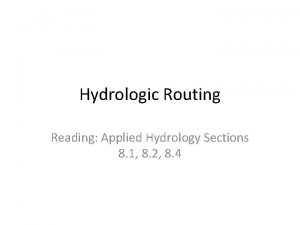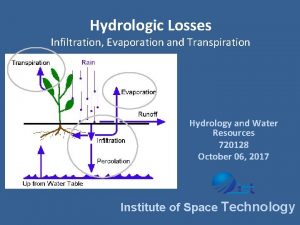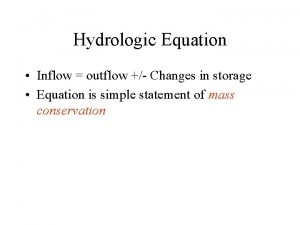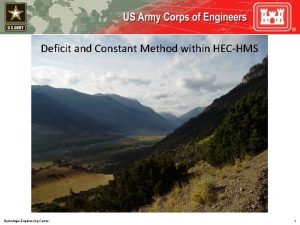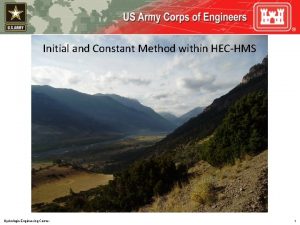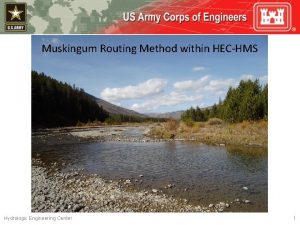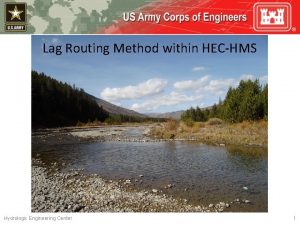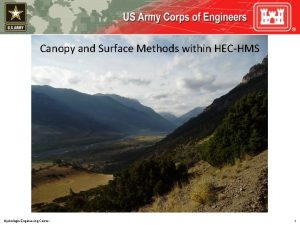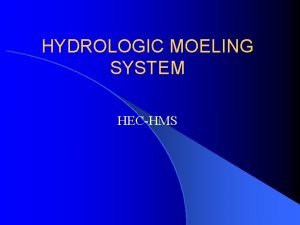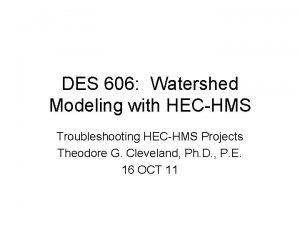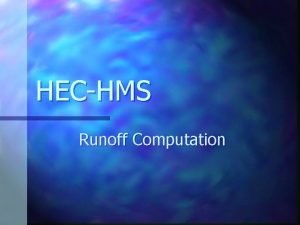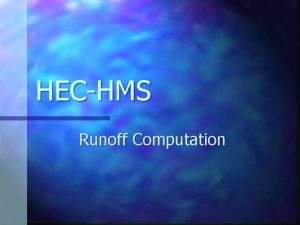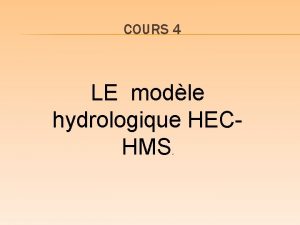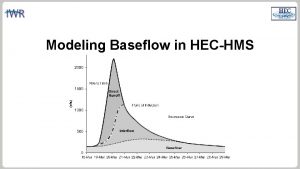Green and Ampt Method within HECHMS Hydrologic Engineering













- Slides: 13

Green and Ampt Method within HEC-HMS Hydrologic Engineering Center 1

Objectives • Introduce the Green and Ampt method • Discuss commonly used data sources and parameter estimation techniques • Summarize parameter calibration techniques • Present advantages and disadvantages Hydrologic Engineering Center 2

Green and Ampt Loss Method Physically-based loss method first proposed in 1911 Assumes a uniform soil profile of infinite depth and constant initial water content This method does not allow for evapotranspiration Real World Green and Ampt Hydrologic Engineering Center 3

Green and Ampt Loss Method Hydrologic Engineering Center 4

Example Hydrologic Engineering Center Time Precip (in) Loss (in) Excess (in) 0200 1. 0 0. 85 0. 15 0300 1. 0 0. 51 0. 49 0400 1. 0 0. 42 0. 58 0500 1. 0 0. 37 0. 63 0600 1. 0 0. 34 0. 66 0700 1. 0 0. 33 0. 67 0800 1. 0 0. 31 0. 69 0900 1. 0 0. 3 0. 7 1000 1. 0 0. 29 0. 71 1100 1. 0 0. 29 0. 71 1200 1. 0 0. 28 0. 72 1300 1. 0 0. 28 0. 72 1400 1. 0 0. 27 0. 73 5

Parameter Estimation – Initial Condition • Two choices: Initial Content and Initial Deficit • Based upon antecedent conditions, evapotranspiration, and soil • Did it rain a day/week/month before the simulation start? Precipitation Hydrologic Engineering Center 6

Parameter Estimation – Saturated Content • • Must be specified when using the Initial Content method Refers to the maximum water holding capacity Effective porosity is a good place to start Get surficial texture from soils database – e. g. silt, loam, sandy loam, etc • Relate texture to required parameters in literature values – Engineer Manual 1110 -2 -1417 – Rawls, Brakensiek, and Miller (1983) Hydrologic Engineering Center 7

Parameter Estimation – Wetting Front Suction • Describes the movement of water downwards through the soil column • Estimate using surficial texture from soils database and literature values Hydrologic Engineering Center 8

Parameter Estimation – Sat. Hydraulic Conductivity • Minimum rate at which precipitation will be infiltrated into the soil layer after it is fully saturated • Estimate using surficial texture from soils database and literature values Hydrologic Engineering Center 9

Parameter Estimation – Impervious Area • Estimate using GIS • National Land Cover Database (NLCD) – NLCD 2016 • Include large, standing water bodies Hydrologic Engineering Center 10

Calibration Techniques • Match initiation of runoff then attempt to match observed runoff volume • Use multiple statistical metrics – Nash-Sutcliffe Efficiency – Root Mean Square Error – Percent Bias Hydrologic Engineering Center 11

Advantages • Parameters can be related to predominant soil textures and estimated using multiple literature sources. • Predicted values are in accordance with classical unsaturated flow theory (good for ungaged watersheds). Hydrologic Engineering Center Disadvantages • Not widely used, so less mature. • Not as much experience in professional community as simpler methods. • Less parsimonious than simpler methods. • Does not allow for continuous simulation. 12

Review • Green and Ampt method recreates observed infiltration phenomena – Exponential decrease of the infiltration rate – Asymptotic limit • Great for locations with little to no observed runoff data • Parameters can be related to predominant soil textures • Requires a greater number of parameters than simpler methods Hydrologic Engineering Center 13
 Green-ampt method excel
Green-ampt method excel Hechms
Hechms Hydrologic engineering center
Hydrologic engineering center Hydrologic engineering center
Hydrologic engineering center River analysis system
River analysis system Hydrologic engineering center
Hydrologic engineering center Green green green red
Green green green red Ampt guard
Ampt guard Ampt time zone
Ampt time zone Hydrologic routing and hydraulic routing
Hydrologic routing and hydraulic routing Goodrich method of flood routing
Goodrich method of flood routing Hydrologic routing
Hydrologic routing Infiltration
Infiltration Write the inflow as a formula
Write the inflow as a formula
